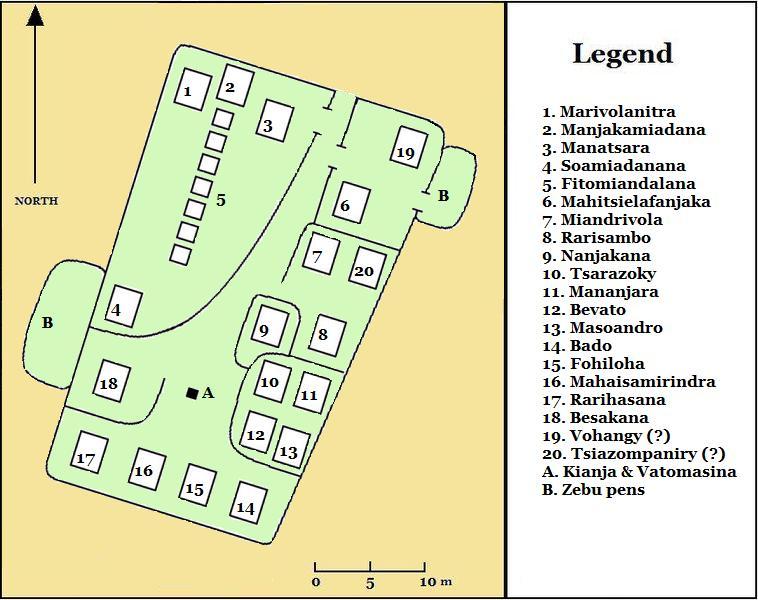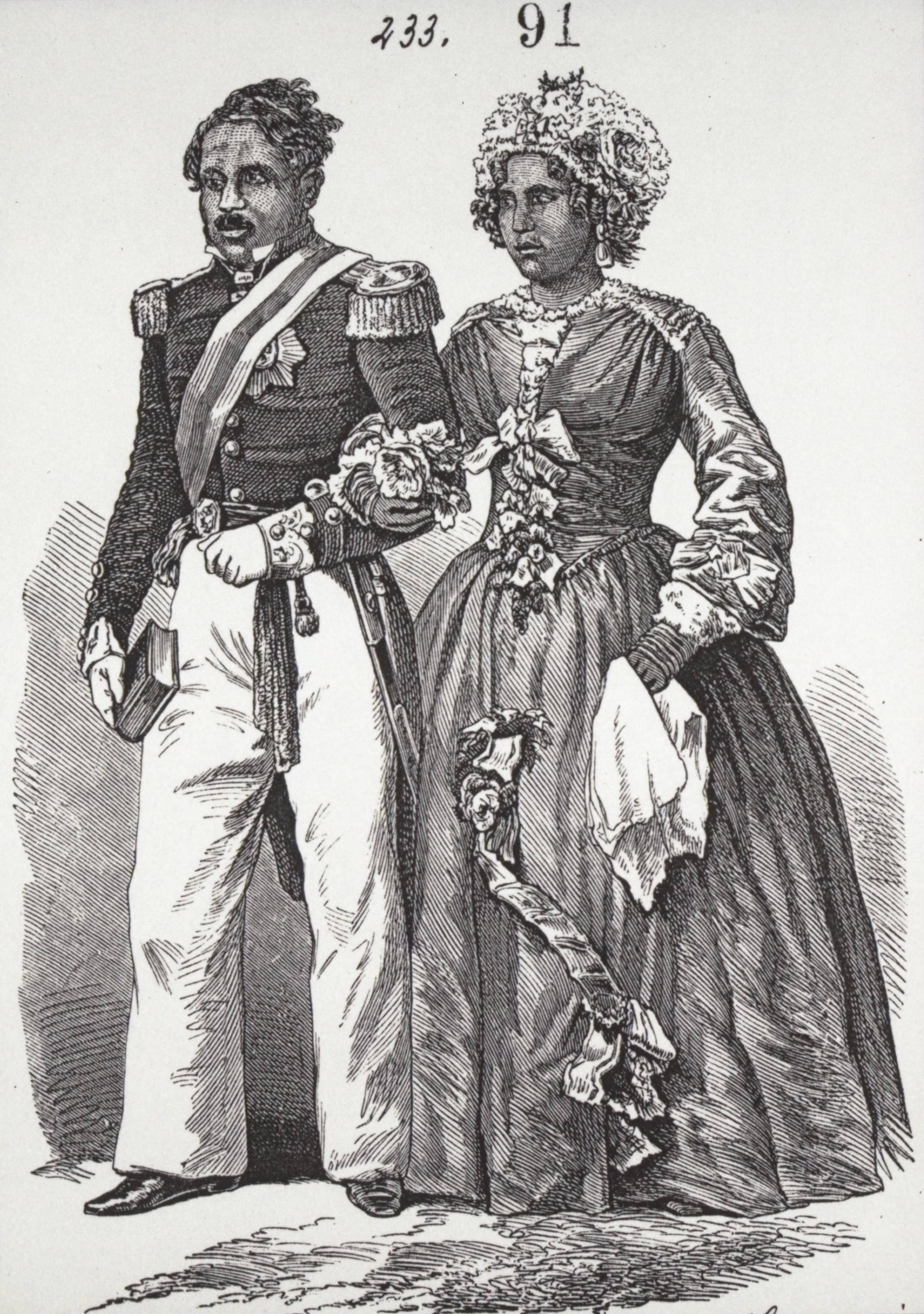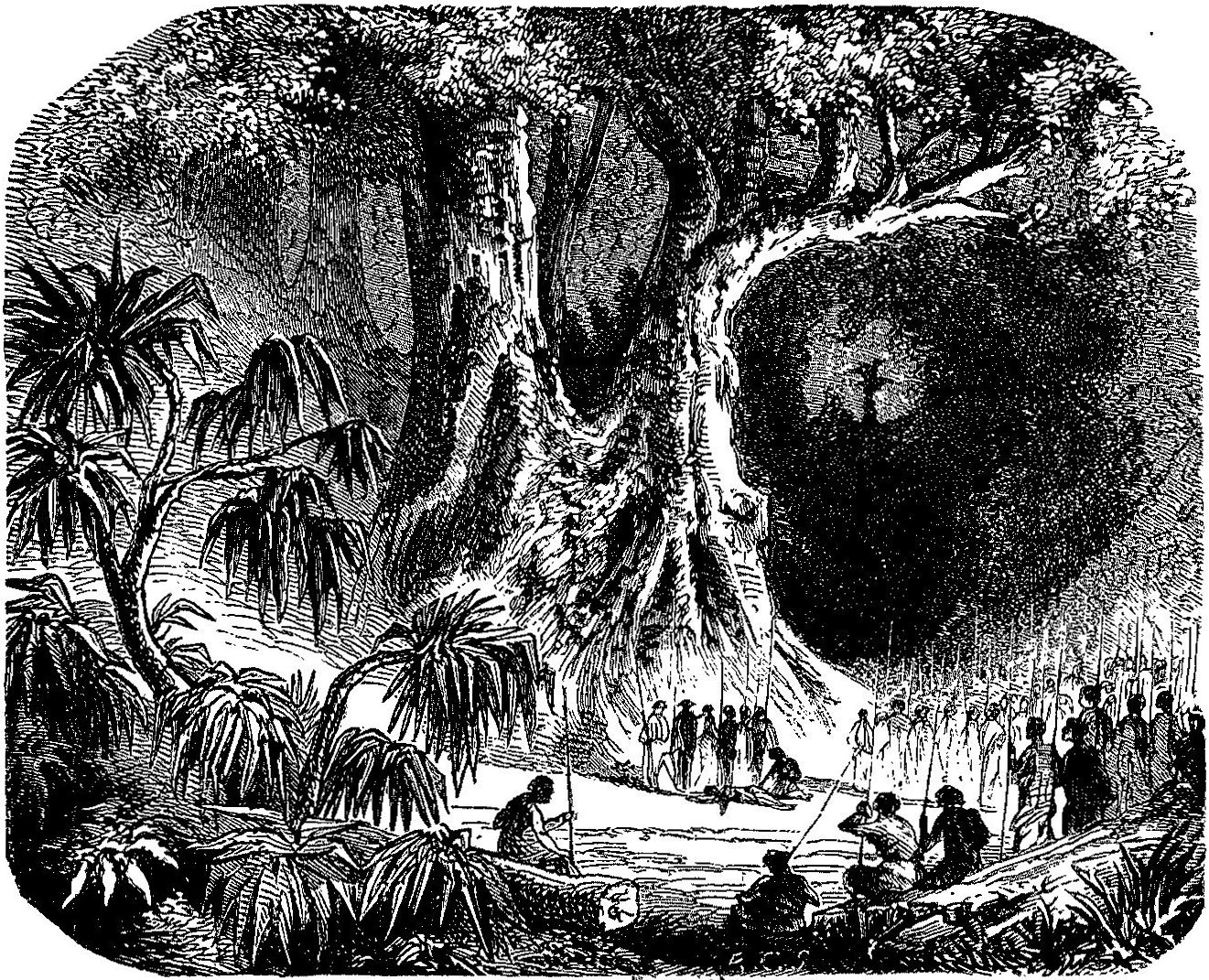|
Rasoherina
Rasoherina (1814 – 1 April 1868) (also Rasoherina-Manjaka) was Queen regnant of Madagascar from 1863 to 1868, succeeding her husband Radama II following his presumed assassination. Early years Rasoherina, niece of Queen Ranavalona I, was born Princess Rabodozanakandriana in 1814, the daughter of Prince Andriantsalamanandriana, of Ambohitraina and Princess Rafaramanjaka (Ramirahavavy). As a young woman, she married Raharolahy (Raharola), a successful statesman in his own right who received 15 state honors and served as Secretary to the Embassy to Great Britain (1836–37), Second Minister for Foreign Affairs in French matters (1862), Minister for the Interior (1862–64), Counselor of Government (1864–65) and Governor of Toamasina (1865). The couple divorced in 1847 and that same year she was married to Ranavalona's son and heir, Rakoto. When he succeeded his mother in 1861 as King Radama II, she was crowned with him as queen consort. Accession to the throne Rasoherina act ... [...More Info...] [...Related Items...] OR: [Wikipedia] [Google] [Baidu] |
Rova Of Antananarivo
The Rova of Antananarivo ( mg, Rovan'i Manjakamiadana ) is a royal palace complex (''rova'') in Madagascar that served as the home of the sovereigns of the Kingdom of Imerina in the 17th and 18th centuries, as well as of the rulers of the Kingdom of Madagascar in the 19th century. Its counterpart is the nearby fortified village of Ambohimanga, which served as the spiritual seat of the kingdom in contrast to the political significance of the Rova in the capital. Located in the central highland city of Antananarivo, the Rova occupies the highest point on Analamanga, formerly the highest of Antananarivo's many hills. Merina king Andrianjaka, who ruled Imerina from around 1610 until 1630, is believed to have captured Analamanga from a Vazimba king around 1610 or 1625 and erected the site's first fortified royal structure. Successive Merina kings continued to rule from the site until the fall of the monarchy in 1896, frequently restoring, modifying or adding royal structures within ... [...More Info...] [...Related Items...] OR: [Wikipedia] [Google] [Baidu] |
Rainilaiarivony
Rainilaiarivony (30 January 1828 – 17 July 1896) was a Malagasy politician who served as the prime minister of Madagascar from 1864 to 1895, succeeding his older brother Rainivoninahitriniony, who had held the post for thirteen years. His career mirrored that of his father Rainiharo, a renowned military man who became prime minister during the reign of Queen Ranavalona I. Despite a childhood marked by ostracism from his family, as a young man Rainilaiarivony was elevated to a position of high authority and confidence in the royal court, serving alongside his father and brother. He co-led a critical military expedition with Rainivoninahitriniony at the age of 24 and was promoted to commander-in-chief of the army following the death of the queen in 1861. In that position he oversaw continuing efforts to maintain royal authority in the outlying regions of Madagascar and acted as adviser to his brother, who had been promoted to prime minister in 1852. He also influenced t ... [...More Info...] [...Related Items...] OR: [Wikipedia] [Google] [Baidu] |
Rainivoninahitriniony
Rainivoninahitriniony (1824–1868), was Prime Minister of the Kingdom of Madagascar between 1852 and 1864. He was the chief engineer of the Aristocratic Revolution initialized upon the attempted assassination of King Radama II. His excesses and participation in the regicide saw him fall from favor, ultimately being relieved of his position and replaced as Prime Minister by his younger brother Rainilaiarivony. Rainivoninahitriniony died in exile on May 5, 1868, shortly after an attempted coup meant to enable him to regain his position upon the death of Queen Rasoherina ended in failure. Early years Born in 1824, Rainivoninahitriniony was known in childhood as Raharo. He and his younger brother Rainilaiarivony were sons of Rainiharo, of the Tsimiamboholahy clan, Prime Minister to Queen Ranavalona I from 1833 to 1852. His mother was Rabodomiarana, a daughter of Ramamonjy. Their family were not ''andriana'' (nobles) by blood but rather belonged to the class of Hova (freemen). T ... [...More Info...] [...Related Items...] OR: [Wikipedia] [Google] [Baidu] |
Ranavalona II
Ranavalona II (1829 – 13 July 1883) was Queen regnant of Madagascar from 1868 to 1883, succeeding Queen Rasoherina, her first cousin. She is best remembered for Christianizing the royal court during her reign. Early life Ranavalona II was born Princess Ramoma in 1829 at Ambatomanoina, near Antananarivo in the central highlands to Prince Razakaratrimo and his wife Princess Rafarasoa Ramasindrazana. As a young woman she, like her cousin Rasoherina, was married to King Radama II and was widowed upon his assassination in the nobles' coup of 1863. The prime minister at the time, Rainivoninahitriniony, played a major role in the assassination plot and public condemnation of the action forced him from his post. The position of prime minister was then filled by his younger brother Rainilaiarivony, who married Queen Rasoherina and then, upon her death, helped to designate Ranavalona II the next monarch of Madagascar and consequently married her to retain his position. During her ye ... [...More Info...] [...Related Items...] OR: [Wikipedia] [Google] [Baidu] |
Radama II
Radama II (September 23, 1829 – May 12, 1863 'contested'' was the son and heir of Queen Ranavalona I and ruled from 1861 to 1863 over the Kingdom of Madagascar, which controlled virtually the entire island. Radama's rule, although brief, was a pivotal period in the history of the Kingdom of Madagascar. Under the unyielding and often harsh 33-year rule of his mother, Queen Ranavalona I, Madagascar had successfully preserved its cultural and political independence from European colonial designs. Rejecting the queen's policy of isolationism and persecution of Christians, Radama II permitted religious freedom and re-opened Madagascar to European influence. Under the terms of the Lambert Charter, which Radama secretly contracted in 1855 with French entrepreneur Joseph-François Lambert while Ranavalona still ruled, the French were awarded exclusive rights to the exploitation of large tracts of valuable land and other lucrative resources and projects. This agreement, which was l ... [...More Info...] [...Related Items...] OR: [Wikipedia] [Google] [Baidu] |
Ambohimanga
Ambohimanga is a hill and traditional fortified royal settlement (''rova'') in Madagascar, located approximately northeast of the capital city of Antananarivo. It is situated in the commune of Ambohimanga Rova. The hill and the rova that stands on top are considered the most significant symbol of the cultural identity of the Merina people and the most important and best-preserved monument of the precolonial Merina Kingdom. The walled historic village includes residences and burial sites of several key monarchs. The site, one of the twelve sacred hills of Imerina, is associated with strong feelings of national identity and has maintained its spiritual and sacred character both in ritual practice and the popular imagination for at least four hundred years. It remains a place of worship to which pilgrims come from Madagascar and elsewhere. The site has been politically important since the early 18th century, when King Andriamasinavalona (1675–1710) divided the Kingdom of Imeri ... [...More Info...] [...Related Items...] OR: [Wikipedia] [Google] [Baidu] |
List Of Imerina Monarchs
This article lists the Imerina monarchs, from the earliest origins of the Merina monarchy until the French conquest of the Merina Kingdom during the Second Madagascar expedition. Early monarchs in the Merina line Below is a list of the line of Merina monarchs that ruled in the Central Highlands of Madagascar and from whom were issued the first true monarchs of a united Madagascar in the 19th century. Before the uniting of Madagascar, succession was based on the current monarch's designation of an heir, typically from among his or her own children. As such, the list below represents a direct genealogical line from the last 19th-century queen of Madagascar to some of the earliest known rulers identified in the 15th century or before. Prior to the 16th century, detailed information about the names and dates of Merina rulers becomes less consistent. Genealogy in this early period are derived primarily from oral history, while later names and dates are verifiable from primary source ... [...More Info...] [...Related Items...] OR: [Wikipedia] [Google] [Baidu] |
Madagascar
Madagascar (; mg, Madagasikara, ), officially the Republic of Madagascar ( mg, Repoblikan'i Madagasikara, links=no, ; french: République de Madagascar), is an island country in the Indian Ocean, approximately off the coast of East Africa across the Mozambique Channel. At Madagascar is the world's List of island countries, second-largest island country, after Indonesia. The nation is home to around 30 million inhabitants and consists of the island of Geography of Madagascar, Madagascar (the List of islands by area, fourth-largest island in the world), along with numerous smaller peripheral islands. Following the prehistoric breakup of the supercontinent Gondwana, Madagascar split from the Indian subcontinent around 90 million years ago, allowing native plants and animals to evolve in relative isolation. Consequently, Madagascar is a biodiversity hotspot; over 90% of wildlife of Madagascar, its wildlife is endemic. Human settlement of Madagascar occurred during or befo ... [...More Info...] [...Related Items...] OR: [Wikipedia] [Google] [Baidu] |
Ranavalona I
Ranavalona I (born Rabodoandrianampoinimerina (also called Ramavo); 1778 – 16 August 1861), also known as Ranavalo-Manjaka I and the “Mad Monarch of Madagascar” was sovereign of the Kingdom of Madagascar from 1828 to 1861. After positioning herself as queen following the death of her young husband, Radama I, Ranavalona pursued a policy of isolationism and self-sufficiency, reducing economic and political ties with European powers, repelling a French attack on the coastal town of Foulpointe, and taking vigorous measures to eradicate the small but growing Malagasy Christian movement initiated under Radama I by members of the London Missionary Society. She made heavy use of the traditional practice of '' fanompoana'' (forced labor as tax payment) to complete public works projects and develop a standing army of between 20,000 and 30,000 Merina soldiers, whom she deployed to pacify outlying regions of the island and further expand the realm. The combination of regular wa ... [...More Info...] [...Related Items...] OR: [Wikipedia] [Google] [Baidu] |
Merina
The Merina people (also known as the Imerina, Antimerina, or Hova) are the largest ethnic group in Madagascar.Merina people Ethnic Groups of Madagascar Encyclopædia Britannica They are the "highlander" Malagasy ethnic group of the African island and one of the country's eighteen official ethnic groups. Their origins are mixed, predominantly with |
Tangena
''Tangena'' is the indigenous name for the tree species ''Cerbera manghas'' (family Apocynaceae) of Madagascar, which produces seeds - containing the highly toxic cardiac glycoside cerberin - that were used historically on the island for trials by ordeal, held in order to determine the guilt or innocence of an accused party. The tradition of the tangena ordeal, which has taken various forms over time, dates to at least the 16th century in Imerina, the central highland kingdom that would eventually come to rule the population of nearly the entire island four centuries later. It has been estimated that the poison may have been responsible for the death of as much as 2% of the population of the central province of Madagascar each year on average, with much higher mortality rates at specific periods, such as during the reign of Queen Ranavalona I (1828–1861), when the ordeal was heavily used. The belief in the genuineness and accuracy of the tangena ordeal was so strongly hel ... [...More Info...] [...Related Items...] OR: [Wikipedia] [Google] [Baidu] |
Prime Minister Of Madagascar ...
This is a list of prime ministers of Madagascar, since the establishment of the office of chief minister in 1828, during the Merina Kingdom. List of officeholders ;Political parties ;Other factions ;Status See also * Politics of Madagascar * List of Imerina monarchs * List of colonial governors of Madagascar * List of presidents of Madagascar * Vice President of Madagascar * First Lady of Madagascar Notes External links World Statesmen – Madagascar {{DEFAULTSORT:Prime Minister Of Madagascar Madagascar, Prime Minister of Government of Madagascar Prime Ministers Prime Ministers A prime minister, premier or chief of cabinet is the head of the cabinet and the leader of the ministers in the executive branch of government, often in a parliamentary or semi-presidential system. Under those systems, a prime minister is no ... [...More Info...] [...Related Items...] OR: [Wikipedia] [Google] [Baidu] |









